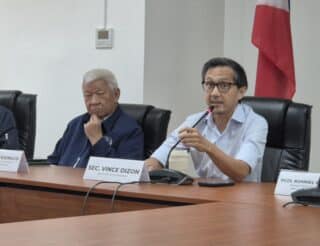Exports of garments and hard goods may grow by only 5 percent this year as the continued increase in electricity rates are seen to largely hamper the sectors’ expected expansion, the Foreign Buyers Association of the Philippines (Fobap) warned on Friday.
Fobap president Robert M. Young noted that they have initially forecasted exports from these sectors to grow by as much as 20 percent to $500 million this year on the back of rising orders, mainly from the United States.
“We are very optimistic as all the other Asean countries are having some difficulties, such as wage increases and political turmoil, and these are our competitors in garments and hard goods. [Our relatively stable situation] has been attracting foreign buyers,” Young said.
“This is the year when we saw the difference because buyers are really very interested. We just came back from New York where the sales of the department stores are really improving, which means they need merchandise. They’re going back to the Philippines because we’re noted for our quality,” he added.
However, news about power rate increases over the last month had prompted some foreign buyers to either hold or cut their orders from the Philippines in the meantime.
“Despite stable wages and labor situation, power rates are hampering [this expected growth]. In terms of electricity rates, we have the second highest in Asia, next to Japan,” he noted.
Young, however, remained optimistic that should the “power and labor sectors behave this year,” the original target of $500 million in exports remains attainable.
Meanwhile, Fobap is now in discussions with the Department of Trade and Industry on how the country can better seize opportunities as well as how to regain these sectors’ so-called “golden years” when exports averaged $1 billion annually.
It was after 2006, following the 30th year of Fobap, when the figures began to drop. Over that course of 30 years, total exports of garments and hard goods were valued at $30 billion, Young said.
He underscored the need for the two sectors to undertake more aggressive preparations for the impending establishment of the Asean Economic Community by 2015. These should include more educational training and the upgrade of equipment and facilities to enable local firms to bring down costs.
“We are not even 50 percent prepared. We have to update our machinery and make sure factories are computerized. In terms of production volume, we are ‘culturally lagging’ because we have so many holidays. We are not very comfortable at the moment,” he said.
According to Young, Fobap is looking to collaborate with various garments, textiles and hard goods associations to prepare a roadmap for the said sectors, and is likewise pushing the government to revive the “Save Our Industries Act,” which will allow Philippine-made apparel that uses fabrics from the United States to be re-exported duty free.
Fobap had also conducted tours of the Subic Freeport to urge local exporters to make use of other ports to help decongest the one in Manila. At present, 80 percent of garments, textiles and hard goods pass through the Manila port according to Young, while the rest are scattered across other ports in the country.


